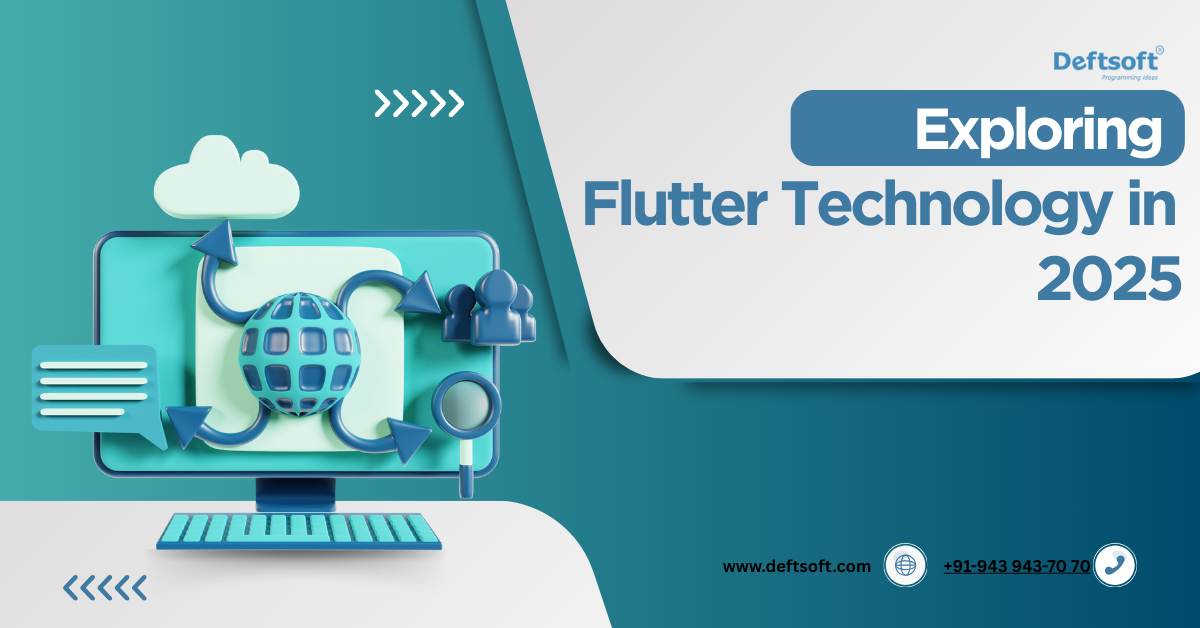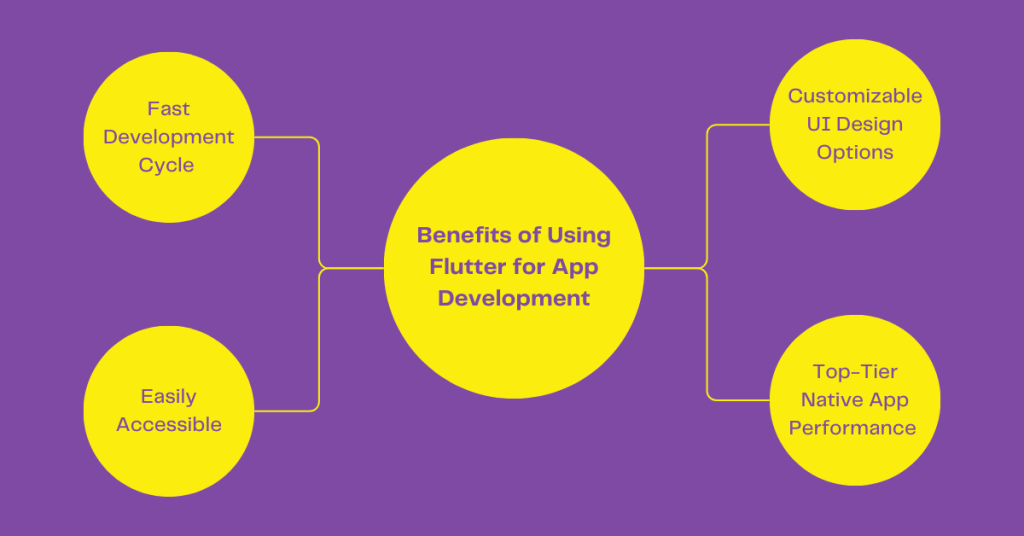In the ever-evolving world of mobile app development, choosing the right framework is crucial. React Native and Flutter are two leading contenders. Both offer unique advantages for cross-platform development. As we look toward 2025, the debate intensifies. Which framework will reign supreme?
React Native, backed by Facebook, has a strong community and extensive library support. Flutter, developed by Google, is known for its seamless performance and rich UI capabilities. Developers and businesses must weigh their options carefully. Understanding the strengths and weaknesses of each framework is key.
This article will explore React Native vs Flutter in 2025, helping you make an informed decision.
Overview: React Native vs Flutter in 2025
React Native and Flutter continue to lead the pack in mobile app frameworks. Their popularity stems from their ability to cater to both iOS and Android platforms effectively. In 2025, these frameworks are expected to have introduced new features to enhance their capabilities further.
React Native will likely focus on improving integration with native modules. This will streamline the development process and reduce complexity. Flutter, in contrast, aims to strengthen its ties with Google’s ecosystem. This could result in even better performance and more versatile applications. The choice between these frameworks often hinges on specific project needs. Each framework presents distinct benefits and challenges, making the decision highly context-dependent.
Programming Languages: JavaScript vs Dart
React Native operates using JavaScript, a language familiar to many developers. Its widespread use makes onboarding new developers easier. JavaScript’s flexibility contributes to React Native’s popularity.
In contrast, Flutter uses Dart, a language developed by Google. Dart is less common but integrates seamlessly with Flutter. This integration can lead to more consistent performance.
Here’s a quick comparison of the two languages:
- Familiarity: JavaScript is more widely known than Dart.
- Performance: Dart provides smoother user experiences.
- Learning Curve: Dart might require more time to learn for non-Google ecosystem developers.
Ultimately, the choice of language can significantly impact project success.
Performance and Rendering Engines
Performance is a crucial factor in app development. React Native relies on a bridge between JavaScript and native components, which can impact speed. This may lead to occasional performance bottlenecks.
Conversely, Flutter uses its Skia graphics engine. It compiles directly to native code, resulting in faster performance. This engine allows Flutter to offer smooth animations and transitions.
Key differences include:
- Rendering: React Native uses a bridge, while Flutter compiles natively.
- Animation: Flutter is known for its smooth animations.
- Bottlenecks: React Native might face some due to its bridge.
In choosing a framework, performance considerations should align with your project needs.
Developer Experience and Debugging
A seamless developer experience can enhance productivity. React Native offers developers access to a vast JavaScript ecosystem. This makes finding resources and libraries straightforward.
However, React Native debugging can be tricky. This is due to its reliance on third-party libraries and native modules. Developers may spend extra time resolving these complexities.
Flutter provides a more integrated experience with its “hot reload” feature. This allows developers to see changes instantly, thus accelerating debugging. Some notable aspects include:
- Hot Reload: Instantly view changes.
- Ecosystem: Extensive JavaScript libraries for React Native.
- Complexity: Flutter offers less debugging complexity.
Effective debugging processes can significantly impact overall development timelines. Choose accordingly for smoother development.
UI/UX Capabilities and Customization
While talking about React Native vs Flutter, both are known for their robust UI/UX frameworks. React Native utilizes a variety of third-party libraries for UI components. This flexibility can be both an advantage and a challenge for customization.
Flutter offers a widget-based architecture. This provides more consistency in creating complex UIs. Developers appreciate its seamless integration with existing design systems.
Flutter’s architecture often results in smoother animations and transitions. These elements are essential for high-performance applications. Here’s a summary of their UI/UX features:
- React Native: Flexible third-party UI libraries.
- Flutter: Consistent widget-based architecture.
- Performance: Smooth animations with Flutter.
Selecting a framework should take into account project-specific UI/UX requirements. Both frameworks support high-quality design elements, yet serve different design needs.
Choosing the Right Framework for Your Project (React Native vs Flutter)
In 2025, the debate around React Native vs Flutter continues to gain momentum as businesses and developers look for the best cross-platform mobile app solutions. Both frameworks have matured significantly, offering unique advantages that cater to different project needs. Understanding their core differences is essential for making an informed decision.
React Native, powered by Facebook, has a vast developer community and an extensive ecosystem of third-party libraries. Its use of JavaScript, a language familiar to many developers, makes onboarding and collaboration easier. Additionally, React Native’s modular architecture allows for efficient code reuse, which is particularly beneficial when scaling applications. However, it relies on a bridge between JavaScript and native components, which can occasionally cause performance bottlenecks in complex apps. Despite this, React Native remains a strong choice for projects that require integration with existing native apps or for teams already proficient in JavaScript.
Flutter, developed by Google, takes a different approach. Using Dart, Flutter compiles directly to native code, eliminating the need for a bridge and offering smoother, faster performance. Its widget-based architecture allows for highly customizable and visually consistent UI designs. Animations and transitions are fluid, making Flutter an excellent choice for apps that require a rich user experience. Flutter also continues to expand beyond mobile, offering strong support for web and desktop applications, which enhances its versatility in 2025.
When comparing React Native vs Flutter, performance and UI consistency are key considerations. Flutter often excels in rendering complex animations and providing a seamless user experience, while React Native benefits from a mature ecosystem, making development faster when leveraging existing libraries. The choice ultimately depends on project requirements, team expertise, and long-term maintenance goals. From a business perspective, cost, developer availability, and scalability play a critical role. React Native’s widespread use of JavaScript makes hiring easier and potentially more cost-effective. Flutter, although using a less common language, offers long-term benefits in performance and cross-platform consistency. Both frameworks are increasingly integrating AI capabilities and supporting emerging technologies like AR/VR, opening new possibilities for innovative applications in 2025.
In conclusion, deciding between React Native vs Flutter involves evaluating project-specific needs, design complexity, and developer proficiency. For visually rich, high-performance apps, Flutter may be the preferred choice, while React Native is ideal for projects needing integration with existing apps and faster development cycles. By understanding the strengths of each framework, businesses can ensure their mobile apps remain competitive, scalable, and ready for the future.
Community, Ecosystem, and Documentation: React Native vs Flutter
React Native boasts a large community with extensive resources. Its longer market presence has led to a wealth of third-party libraries. This ecosystem supports rapid development and problem-solving.
Flutter, though newer, is catching up quickly. Google’s backing has accelerated its growth. Flutter’s community is vibrant, providing comprehensive tutorials and guides.
Documentation quality matters for efficient onboarding. Both frameworks offer detailed documentation, but there are differences. Here are some highlights:
- React Native: Extensive libraries and plugins.
- Flutter: Growing community and resources.
- Documentation: Both are developer-friendly.
Community size and resource availability can influence your choice. Both frameworks are well-documented, yet vary in ecosystem maturity.
Cross-Platform Support: Mobile, Web, and Beyond
In 2025, both React Native and Flutter will extend beyond mobile support. React Native is improving its web compatibility, enabling seamless app experiences. This expansion is beneficial for businesses targeting multiple platforms.
Flutter continues to enhance its reach across web, mobile, and desktop. It offers uniform performance across different devices, maintaining app consistency. Flutter’s framework flexibility is beneficial for cross-platform development.
Key considerations for cross-platform support:
- React Native: Focus on improving web capabilities.
- Flutter: Strong multi-platform consistency.
- Platform Reach: Covers mobile, web, and desktop applications.
Both frameworks aim to broaden their scope, efficiently catering to diverse development needs.
Business Considerations: Cost, Scalability, and Team Skills
When comparing React Native vs Flutter in 2025, several factors need to be considered. For example, consider the cost. React Native’s use of JavaScript makes it easier to find developers. This can reduce hiring costs.
Scalability is another key factor. React Native’s modular architecture enables efficient scaling. Flutter’s consistent performance across platforms also aids scaling.
The skills of your development team also play a role. Evaluate their proficiency in JavaScript or Dart. This can significantly impact development speed and project success.
Factors to consider include:
- Developer Availability: JavaScript is widely known.
- Architecture: React Native supports modular scaling.
- Skill Set Compatibility: Team proficiency in relevant languages.
Future Trends: React Native vs Flutter in 2025
In 2025, React Native vs Flutter has become quite relevant as both are expected to integrate more AI features. These integrations will likely enhance app intelligence and user experiences.
Additionally, support for emerging technologies like AR and VR is anticipated. This will open new possibilities for innovative app development. Flutter may expand its desktop capabilities, while React Native aims to reduce its reliance on native modules to improve performance.
Conclusion: React Native vs Flutter
Choosing between React Native and Flutter in 2025 depends on your project’s needs. Consider your team’s expertise and your app’s goals. Both frameworks offer strengths and flexibility for developers.
React Native may suit projects requiring integration with existing apps. Flutter, with its consistent performance, is ideal for visually rich, cross-platform applications. Evaluate your development timeline, budget, and long-term maintenance plans when making your decision. Both frameworks are poised to meet diverse requirements, ensuring robust app development solutions.
Why Choose Deftsoft for Your Mobile App Development Needs?
At Deftsoft, we specialize in delivering high-quality, scalable, and future-ready mobile applications using both React Native and Flutter. With over a decade of experience in mobile and cross-platform development, our team of expert developers helps businesses bring their ideas to life with intuitive design and seamless functionality. Whether you need a visually dynamic Flutter app or a robust React Native solution, Deftsoft has the tools, talent, and technology to turn your vision into reality.
We don’t just develop apps—we build experiences that resonate with your users and drive growth. Our end-to-end services include consultation, UI/UX design, development, testing, and post-launch support. As a trusted technology partner, we work closely with startups, SMEs, and enterprises to build apps that are fast, secure, and market-ready.
Choose Deftsoft and stay ahead in the competitive app development landscape of 2025. Let’s build something remarkable—together.
FAQs
Q1. Which is easier to learn: React Native vs Flutter?
React Native is easier for developers familiar with JavaScript, while Flutter might have a steeper learning curve due to Dart.
Q2. Is Flutter better for animations and UI?
Yes, Flutter’s widget-based architecture and Skia rendering engine make it ideal for smooth, visually-rich animations and custom UI designs.
Q3. Can both frameworks be used for web and desktop apps?
Yes, both React Native and Flutter now support web and desktop platforms, with Flutter offering slightly better consistency across devices.
Q4. Which framework is better for a startup app development?
Both are great for startups, but React Native might be more cost-effective due to the availability of JavaScript developers.
Q5. Does Deftsoft offer cross-platform development using both frameworks?
Absolutely! Deftsoft has dedicated teams for both Flutter and React Native to meet diverse project needs and deliver high-performance apps.




